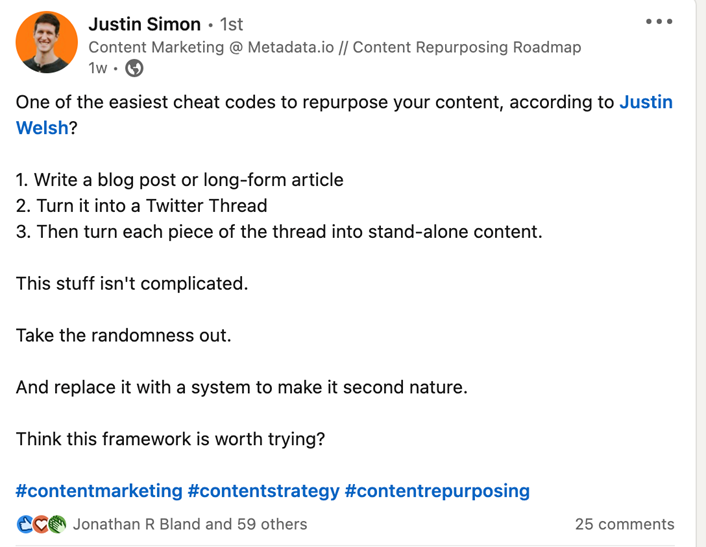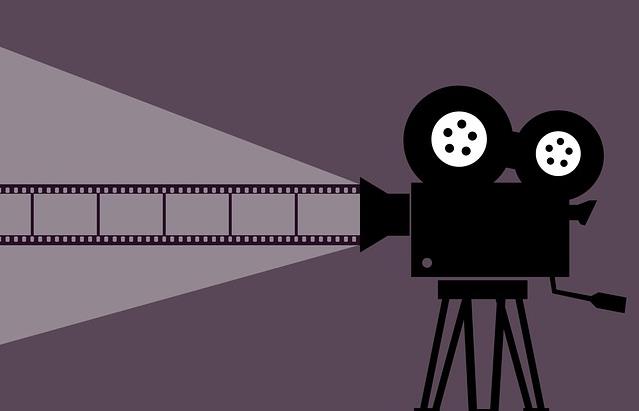Filming Your Podcast
Why you should video record your podcasts
Podcasts are exploding in popularity and people just can’t get enough of them. According to Edison research 32% of Americans listen to podcasts monthly - and this figure is growing every year.
This is exactly why so many businesses in B2C or B2B markets are scrambling to figure out their podcast strategy.
Now, in this scramble what many companies don’t realize is that there’s a huge amount of value to be gained from not just producing podcast episodes, but filming them as well.
Why?
The hidden work involved with podcasts
Podcasting teams know that there's much to more podcasting than just calling up an expert, recording the conversation, and then releasing it.
Aside from the challenge of figuring out the topics that will resonate with your audience, the logistics behind the scenes are daunting.
Finding a time that works with your team's and your guest's schedules, setting up recording equipment and software, editing the episode and finally releasing it on multiple podcast platforms - these all add up to make podcasting a very resource-intensive project.
In fact, one of the hardest things about podcasts is booking the right guests. These guests are often:
- Experts within their field
- Naturally charismatic and sociable
- Better verbal communicators than they are writers
- And have a sizeable social media following
Because of all this, they're already going to be in high demand. When you do get the chance to book one of them, you're naturally going to want to get the most value you can out of their content.
A great way to do this is to take your long-form podcast content and turn it into bite-sized pieces of content for consumption.
Repurpose your podcasts to easily create more content
Today, many marketers say taking a piece of long-form content and repurposing it is one of the best ways to get ahead of your content strategy and distribution.
Since each platform requires its own “approach” - it's natural that you can reuse content while positioning it slightly differently for each audience. Here’s a LinkedIN post from Justin Simon of Metadata.io, who talks specifically about this:

Now, how does that apply to your podcast? Well here’s a few ideas:
- Release the entire podcast as a video on YouTube, or even as gated content on your website (and use these to create short promotional clips for social media posts and reels)
- Create standalone images and graphics from your podcasts' key points (and insert these into your videos and blog posts)
- Use transcriptions to create thought leadership-style blog posts (and use excerpts from these to create Twitter threads and other short-form written social media content)
Creating videos from your podcasts is easy
The reality is that the hardest part is often getting the conversation going.
As long as your guest has a webcam, actually recording your guests and speakers is considerably easier - it’s just another logistics hoop to jump through.
The barebones option is using video-conferencing apps like Zoom. They usually have built in screen-recording capabilities that make filming your podcast easy. They can also easily feed multiple channels which makes it easy for video editors to cut and splice up the footage, giving it a new life.
Bespoke podcast recording apps can be an even better option. They record each audio and video track separately, which creates better quality sound and video recordings, and more flexibility in post-production editing.
The "big-spender" option is hiring a video production agency like Rocketwheel to do the leg work for you. Just send them your video and audio files, and they can create a wide range of polished video content that you'll be able to use on your Youtube channel, social media accounts, and landing pages.
The best part is, you just need to let people talk
Most people jumping on a podcast are interested in having more content to share with their audiences. Creating video clips for your guests to share can encourage more experts and influencers to come on your podcast.
Best of all, you don’t need to worry about having the best quality in the world for your video, nor making sure the angles and shots are perfect.
Many companies settle for “good enough”. The real value is two thought leaders exchanging their perspectives, not the production value. It’s the substance, not the form.
You don't need to overthink it and over-prepare. Just decide on the software you're going to use, and start recording.
It’s really a win-win. You create a mature content strategy with minimal additional work, and your guests get more to provide more value to their audiences.
On top of this, you both get a whole new type of content which you know your audiences will love - because video is by far one of the most engaging ways for viewers to consume content in 2022.
So is it time to record your podcast?
The answer is yes.
And it’s time to think about how to take that 1 hour and repurpose it into a month or two of content distribution. You don’t need to stress yourself out with constantly thinking up new ideas.
Just think about how to take your existing efforts and multiply them.
That’s the smart marketer's way of maximizing content while minimizing the work in creating it:
Let your podcast thought leaders do the hard work for you, so you can focus on distribution and getting the word out.
Related Posts
Blackmail is a serious crime that can cause immense stress and fear.
In today's data-driven world, databases form the backbone of countless applications and systems that power businesses across industries.
It’s no longer a hidden fact that social media platforms like Facebook affect the mental health of users.
Relocating an IT company is a significant endeavor that involves careful planning, coordination, and execution.
Today maintaining office security has become an important concern for businesses of all sizes.
A registered office address is a fundamental requirement for any business entity, whether it’s a corporation, limited liability company (LLC), or partnership.













Comments
comments powered by Disqus